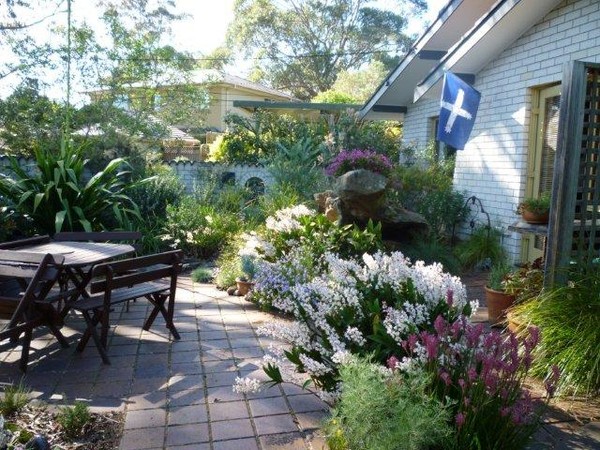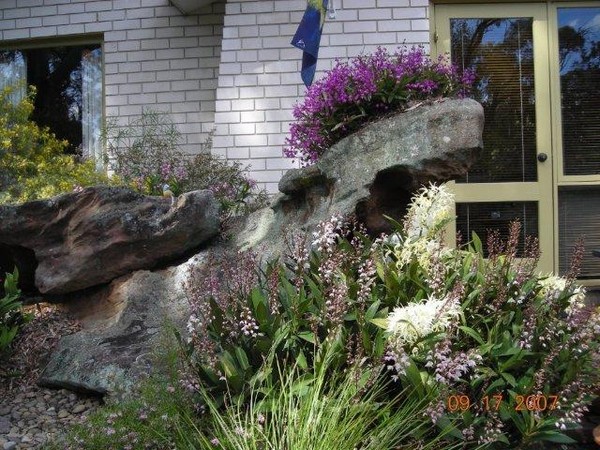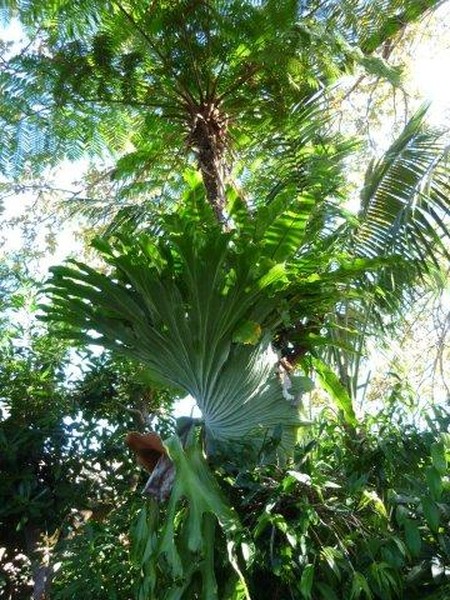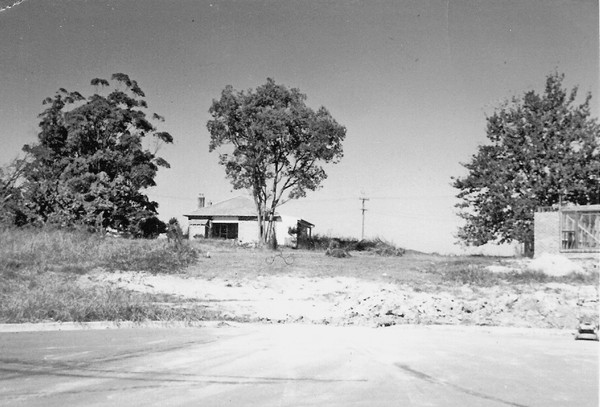Garden Design Study Group: Howes Garden
‘Farncombe’, Hornsby, New South Wales
The land is a suburban block of 700 square metres in area, north facing and relatively flat with only about 500mm fall from front to back. The land shape is unusual in that it has a narrow 10 metre wide frontage and a much longer than normal back boundary that stretches across three properties. The house and separate garage are set well back and there is a long brown coloured concrete driveway from the street to the garage. The soil is a thin layer of loam (about 200mm) over a relatively heavy clay base.
The average rainfall is around 1100mm in a ‘normal’ year. I have found that Sydney is now receiving more frequent tropical weather and often records 120 to 150mm of rain in three days – this makes the garden quite wet, especially there are three or four of these events in a year. My semi tropical/rainforest plants respond very well to this moisture, growing and flowering very well, however my dry tolerant plants often suffer from root rot – a no win situation.
My mulch consists of a layer of local Eucalyptus leaves (front garden) and Oak tree and Eucalyptus leaves in the rear garden. I do not let the thickness exceed 20 to 40mm and I try to keep it fairly open to allow for rainfall penetration. I have tried using a dense layer of chipped mulch and it ended up forming a nearly impenetrable layer as it broke down.
I have found that parts of my garden need watering in hotter times of the year due to the extensive root system of neighbouring trees sucking up any available moisture. A good tip — the closer plants are planted to large trees the less water they need, as the trees main feeder roots are out under the trees ‘drip line’ and not close to the trunk. As well, when it does rain, a lot of water runs down the trunk to moisten the surrounding area of these plants.
The house and separate garage effectively divide the block in half across its length. Access from front to rear is through a gate between the house and garage.
For more information on this garden see Garden Design Study Group Newsletter 83, August 2013, p. 4





 Australian Native Plants Society (Australia)
Australian Native Plants Society (Australia)